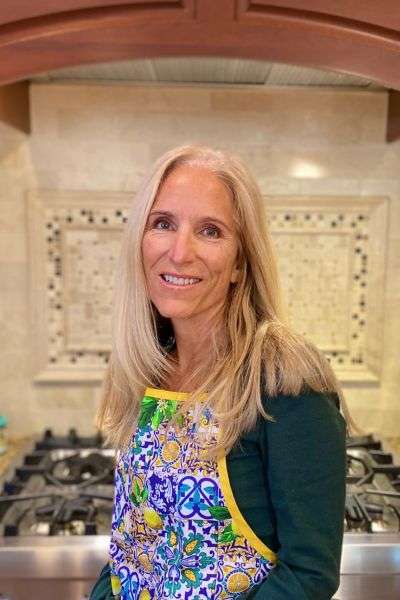What does Mise en place mean? “Mise en place” is a French term meaning “putting in place” and refers to the practice of prepping and organizing ingredients and tools before starting to cook.
If you are just starting out in the kitchen or are a seasoned cook, these following 15 tips will be extremely helpful. Speaking from experience, I use many if not all of these. The tips are in the order of priority to be most helpful for you in the kitchen.
15 Proven Mise en place tips:
1. Read the Entire Recipe Thoroughly
- This is probably the most important tip I can give you – read the entire recipe BEFORE you begin! Whether or not you want to admit it, unfortunately, we may have all been in this situation. Not only will pre-reading allow you to understand the steps better but will also make sure you have all the ingredients you need to make the recipe.
2. Prep, Gather and Organize Ingredients
- Wash, peel, chop, and measure all ingredients (dry & Liquid) before you begin cooking. Store them in bowls, containers, or liquid measuring cups arranged in the order they will be used.
3. Prep Cooking Utensils
- Alongside ingredients, prepare the cooking utensils you’ll need such as tongs, spatulas, ladles, and whisks. This ensures they’re clean and ready for use. It also saves you time from trying to find them last minute.
4. Preheat Equipment
- If your recipe requires preheating the oven or a pan, do this before you start assembling ingredients.
- This is especially important when baking. Baking usually requires a leavening agent such as baking soda/baking powder to produce gas bubbles which helps the product to rise. Activation occurs when a liquid is added. If it is added and the batter sits for too long waiting for the oven to preheat, it may affect the rising and create flat cookies or unrisen breads, muffins, etc.
5. Keep a Trash Bowl or Bin Nearby
- Place a bowl or bin on your workspace for collecting trash, peelings, and other kitchen scraps as you prep ingredients. This keeps your workspace tidy and makes cleanup easier. This is a great time saver and something that I always do.
6. Use Small Bowls or Containers
- Use small bowls or containers (prep bowls) to hold prepped ingredients like chopped garlic, minced herbs, spices, and sauces. This keeps them organized and easily accessible during cooking. This is especially important when ingredients need to be added very quickly, like with my shrimp scampi recipe.
7. Mix Spices Together
- If a recipe calls for many spices to be blended, measure out each and mix together in a small bowl. When you need to use them, they will already be ready to add to your recipe. This will save you time. Mix extras and store in an airtight container to be used at a later time.
More Mise En Place Tips:
8. Prioritize Timing
- Consider the cooking times of different ingredients. Start with items that take longer to cook or prep, such as potatoes or marinated meats, and leave quick-cooking items like fresh herbs or delicate vegetables for last-minute preparation.
9. Clean as you go
- While cooking, clean up spills, wash utensils and dishes that you no longer need, and keep your workspace organized. This prevents clutter and makes cleanup easier after cooking. Keep a damp cloth or paper towel nearby to wipe down cutting boards, utensils, or spills quickly, maintaining a clean workspace.
10. Be Mindful of Cross-Contamination
- When working with raw meat such as chicken, beef, pork, fish, etc., it is essential to use one knife or utensil only for that particular meat. When finished, transfer to sink so you do not accidentally grab and use it for a different food item. This also applies for cutting boards, measuring cups, and anything you are using to prep your food.
- Also, it is very important to wash your hands frequently if you have been touching raw meat. Wash them before opening the refrigerator, drawer, oven, etc. or touching surfaces like the faucet handle. If you don’t, you will unknowingly spread germs around your kitchen which may lead to contamination of surfaces and spread of bacteria.
- I try and always keep my dominant hand as the “clean” hand and use my non-dominant hand to touch and manipulate the meat. This way, if you need to grab something quickly, you can use the dominant hand (which is using the utensil) and be certain that it is ok to use. If in doubt, wash your hands prior to using them for other purposes.
11. Invest in Quality Tools especially an instant read thermometer
- Do yourself a favor and buy a good quality instant read thermometer, like Thermoworks. This will be one of your best friends in the kitchen and will save you from both undercooking and overcooking your food.
- Quality knives, cutting boards, and other kitchen tools can make prep work faster and more efficient. Invest in tools that are comfortable to use and easy to clean. The old saying is true: It is easier to cut yourself with a dull knife than a sharp knife. A dull knife requires more force to make a cut, and thus is much easier to slip and cut yourself.
12. Think About Clean-Up
- As you prep, consider what dishes and utensils will be used and plan how to clean them as you go. This keeps your kitchen organized and prevents a pile-up of dirty dishes after cooking!
13. Label and Date Leftovers
- If you end up with leftover prepped ingredients, label them with the date and contents before storing in the refrigerator or freezer for future use.
14. Review and Reflect
- After cooking, reflect on your mise en place process. Identify areas where you can improve or adjust for next time based on how smoothly the cooking process went.
15. Enjoy the process
- Mise en place is not only about efficiency but also about enjoying the fundamental aspect of cooking. It not only enhances the cooking process but also contributes to the overall success and enjoyment of preparing meals. Take your time to savor each step and appreciate the art of cooking!




